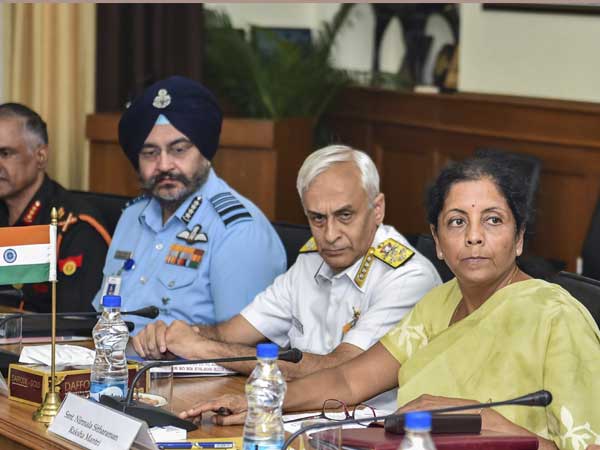
Political parties have used elections as movements to revitalise their organisations. The key Uttar Pradesh-based parties, the Bahujan Samaj Party and the Samajwadi Party, have been especially proficient in this. Elections have been an essential tool for creating energy and bringing in new members and has worked particularly well for non cadre-based parties, which is the case with most Indian political parties. Since the Gujarat assembly elections last year, the Congress has used every election to wake up the party organisation – testing the ground both for fire power and to experiment with alliances, like in the Kairana by-poll. But most significantly, facing for the first time a party at the helm with a strong and distinct political philosophy not buttressed by coalition partners, it has sought to make this a battle of ideas.
For a while, it did appear that Rahul Gandhi’s temple run ahead of the Gujarat polls was a lameduck action plan that, instead of creating an alternative political narrative, only joined in the dominant one articulated by the Bharatiya Janata Party under Narendra Modi and Amit Shah. That plan ran alongside a strategy to harness Dalit anger at incidents like in Una, highlight the demand of Patidar Patels for reservation, farm crisis and the impact of demonetisation on the Surat gems and jewellery trade. Nearly a year since then, and with his temple visits continuing and likely to grab attention ahead of the coming state assembly elections, he has somewhat succeeded in countering the divisive campaign that described him as anti-Hindu. To that extent he has blunted the BJP’s attacks on him on the subject of Hindu majoritarianism and kept the Congress in the running for the Hindu vote – though Modi remains emphatically the ‘Hindu Hriday Samrat’.
Realm of ideas
Widening the scope of what the Congress started in Gujarat, he has now added other elements to the political discourse that go beyond the Hindu vesus anti Hindu debate. The determinant will not be the short-term goal of sewing up alliances for the sake of power. Those are not lasting solutions. Modi, since the run-up to 2014, has centred his campaign in the realm of ideas – with a development agenda based on his version of the Gujarat model. Hence, the counter too has to be in the realm of ideas.
The Congress-led UPA lost the battle of perception in 2014 on two counts, corruption and policy paralysis or non performance. Four years down the line, the Congress party has decided that it has enough ammunition to push back on the same lines. That explains the Congress strategy to stick to the Rafale case and provide it with the highest ballast. The party appears to believe it has sunk its teeth into something juicy. And it is evidently hurting. Feisty defence minister Nirmala Sitharaman recently conceded that the Rafale controversy was a battle of perception and the BJP would fight it. That tack to zero-in on corruption charges began on a big scale in the course of the Karnataka elections where it targeted the corruption of the BJP’s BS Yeddyurappa and the Reddy brothers. The Congress has now highlighted what it believes to be lack of performance in a number of areas – like employment generation, farm distress, fuel prices and rupee value. It is a role reversal of a peculiar kind. All Congress governments since Indira Gandhi have been accused of large-scale corruption and cronyism. Now, the shoe is on the other foot.
There are questions about how adept the Congress party has been in generating ideas. In power, the game changing DBT or direct benefit transfer scheme was credited to Rahul Gandhi – an idea he apparently got during a conversation with a weaver in Varanasi. MNREGA, the employment scheme that has kept poor households going in times of crisis, followed from discussions in the erstwhile National Advisory Council. But, the biggest idea perhaps has been the relatively young Congress president's political reorientation – giving less importance to the corporate governance style of running a party that he preferred earlier to opting for a visible and aggressive style based on campaigns. Of course he could still come up short against Modi and Shah because he is not a 24x7 politician.
The push back against the BJP has avoided one important pitfall. Rahul Gandhi has chosen not to centre his attack on the Modi government on the progressives versus nationalists debate to blunt the rightwing surge in India – because that has its obvious limitations. The BJP holds it up as its trump card and the Congress is too far behind on the issue to be able to catch up. It is the BJP's default option as Amit Shah's recent speech to party workers in Jaipur illustrated. He attacked the Congress on the Akhlaq case in Uttar Pradesh's Dadri village and on Bangladeshi infiltrators. Modi is still the tallest leader in India and his success lies in running a presidential kind of election. However, Rahul Gandhi has found some dry gunpowder to launch an attack on his political rivals. He could be waiting for the time when the BJP's anger factory dissipates, which would happen eventually, and the people would then notice him standing at the door. In a sense, a party that was all but finished has found a way to stand up and be counted.
ananda.majumdar@mydigitalfc.com





